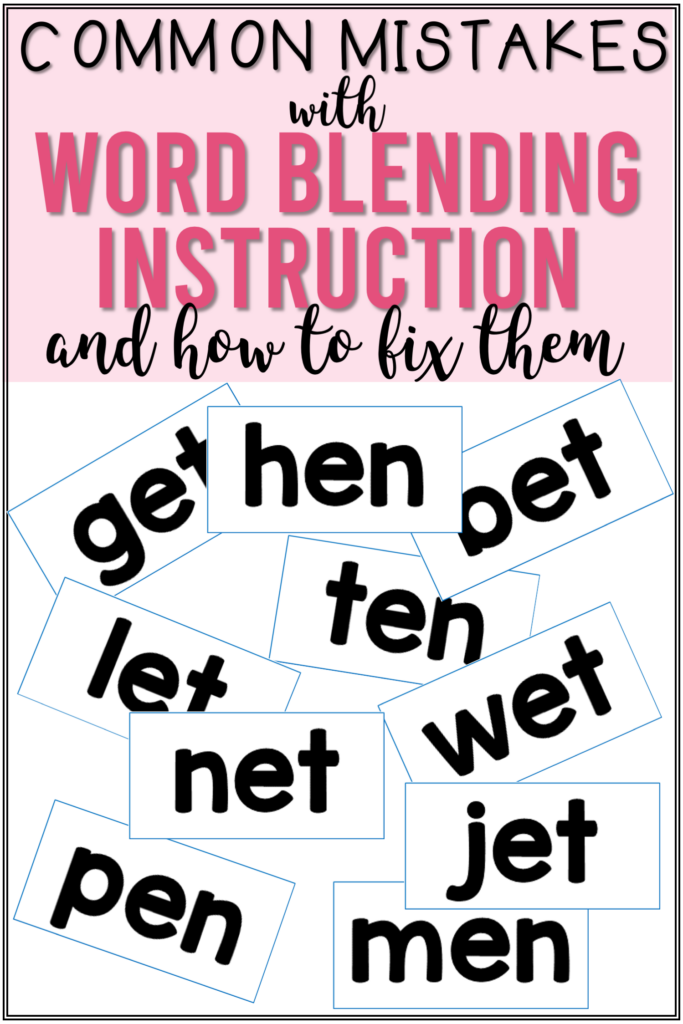
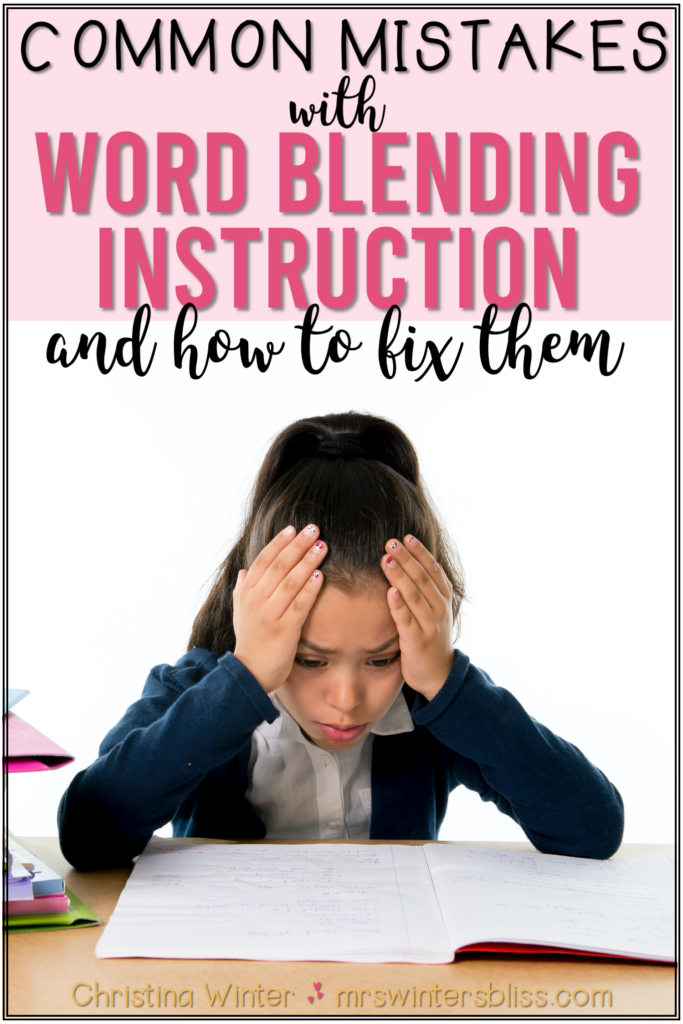
Blending is the main strategy we use to help students learn to decode, but there are common mistakes teachers make when teaching it. I’m sharing the four most common mistakes we make when teaching students to blend, tips to help you avoid them and my NO PREP Fluency Builders – Word Blending Activities that provide meaningful and strategic blending practice.
As a lower grade teacher, one of your biggest responsibilities is to teach your students how to read. While there are many different strategies you use to do this, the one you likely rely on most heavily is blending.
Blending, or the stringing of letter sounds to read a word, is the main strategy we use to teach students to decode. Research shows that the more time a teacher spends on blending, modeling blending, and providing blending practice in isolation and in context, the greater the student gains!
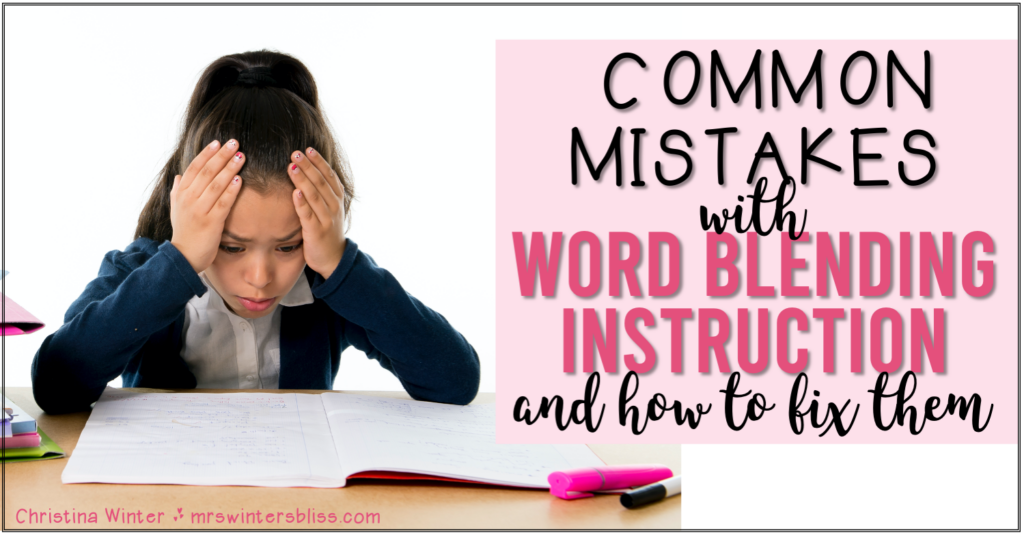
In my last post I shared information on blending, guidelines for best instructional practices and some of my favorite resources for teaching blending.
While it’s definitely important we’re well-informed on best practices for blending, it seems equally valuable to be aware of common mistakes teachers make when teaching blending.
In today’s post, I’m sharing 4 common mistakes teachers make when teaching blending and tips for helping to avoid them. In addition, you’ll get a glance at my Fluency Builders- Word Blending Activities that provide students meaningful and effective blending practice.
Common Mistakes With Blending Instruction
In his book, A Fresh Look at Phonics, Wiley Blevins highlights four common mistakes and problems he observes with blending instruction. They include the following:
1. Too much time spent on decoding words in isolation rather than decoding words in connected texts. Connected text reading should occur daily through a decodable book or story.
2. Teachers need more knowledge of research-based blending routines. Teacher teams should study and work together to better understand when and how to provide the most effective instructional supports.
3. Often the words used to practice blending are not high-utility words. The majority of the words in blending lines should be words that students will likely come across in their reading or use in their writing. Include vocabulary work with our blending lines to further support your English Language Learners.
4. Teachers overdo the modeling. You should only model a word or two in the blending lines. Your students need to do the heavy lifting and sound out the remaining words.
How to Avoid Common Mistakes with Blending Instruction
To help avoid these common pitfalls ask yourself the following questions with regards to your blending routine:
- Do I have enough words in my blending lines prior to reading a story?
- Are some of the words linked to what students will read?
- Did I organize the lists in a way that makes it easy to assess my students?
- Are the lines differentiated enough to provide support for my struggling readers, ample practice for those on-level, and a challenge for my advanced readers?
- Finally, am I letting your students do the blending? Am I over-modeling??
After carefully considering these questions myself, I was motivated to create my own blending resource. I wanted one that would allow teachers to confidently answer “YES!” to each of the questions above, and that’s just what I did!
Fluency Builders- Word Blending Activities
Today I’m excited to share with you my Fluency Builders-Word Blending Activities!

When you use these Word Building Activities you can be confident you are following best instructional practices for blending and avoiding the common pitfalls!
I love them because they are so simple to use! Just print them out and you’re ready to go! NO PREP for you!!
Each printable worksheet starts with review words. Working with familiar words helps to build students’ confidence from the start!
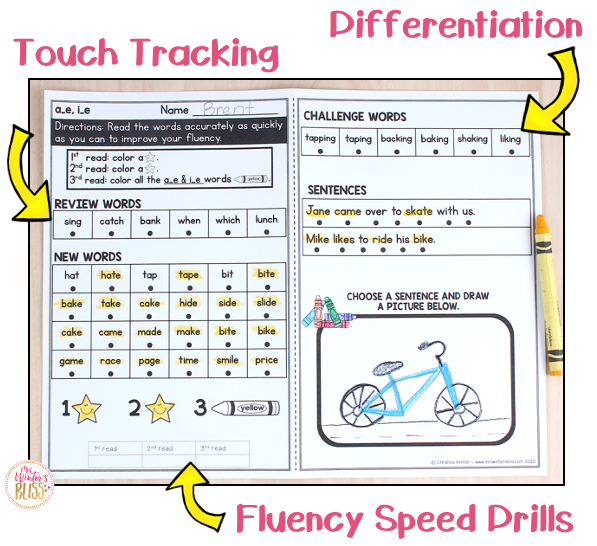
On the bottom left-side there is a spot to track fluency. This can be used to set goals for improving fluency or as an assessment tool for teachers.
There are a lot of words on the page, so to keep students from feeling visually overwhelmed I included a dotted line so you can fold or cut the sheet in half.
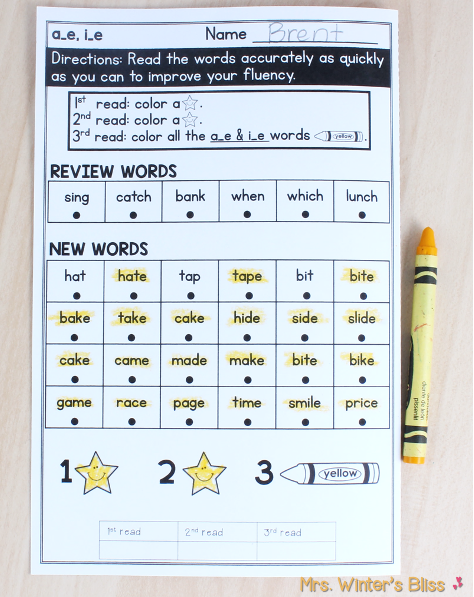
Each worksheet follows a strategic scope and sequence with review words, focused skill, and challenge words. I also included two sentences to provide connected text reading practice. You can feel confident that all students are being adequately supported and challenged!
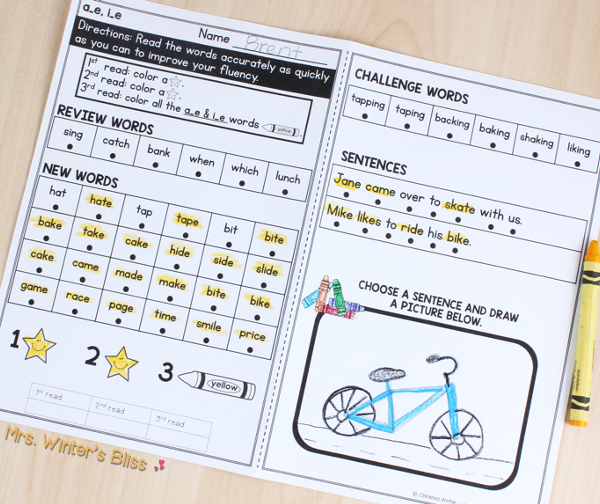
These printable worksheets are perfect to use as a daily warm-up for whole/small groups, assessments, and can even be sent home for strategic practice!
Instructional time is precious and you spend a lot of it on blending! You certainly want to make the most of it! I hope the information and resources I’ve shared today and in my last post will help ensure you’re following best practices and avoiding the common pitfalls. With strong blending instruction, your students have so much to gain!
-shop this post-
-
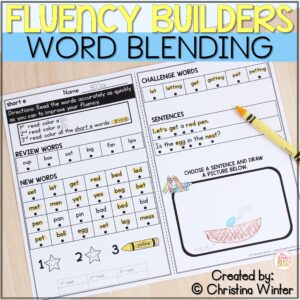 Fluency Builders – Word Blending ActivitiesEarn 0 Reward Points
Fluency Builders – Word Blending ActivitiesEarn 0 Reward Points
$4.00Rated 5.00 out of 5 based on 7 customer ratings
–PIN for LATER–










